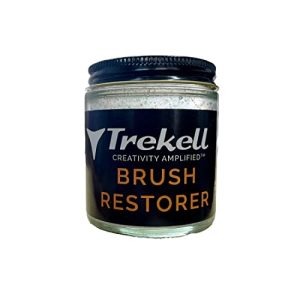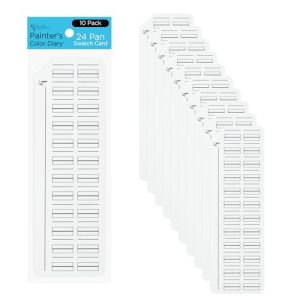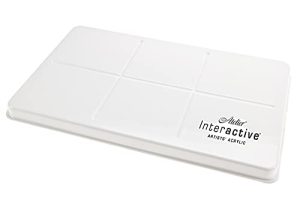Water-based acrylic paint dries quickly and is versatile. It is ideal for various surfaces like canvas, wood, and paper.
Water-based acrylic paint offers many benefits for artists and DIY enthusiasts. Its quick-drying nature allows for faster project completion. Acrylics are known for their vibrant colors and durability, making them suitable for long-lasting artwork. They can be easily cleaned with water, eliminating the need for harsh chemicals.
This type of paint is also non-toxic, making it a safer option for indoor use. Acrylic paint’s flexibility enables it to adhere well to multiple surfaces, including canvas, wood, and metal. Whether you are a professional artist or a hobbyist, water-based acrylic paint provides an excellent medium for creative expression.
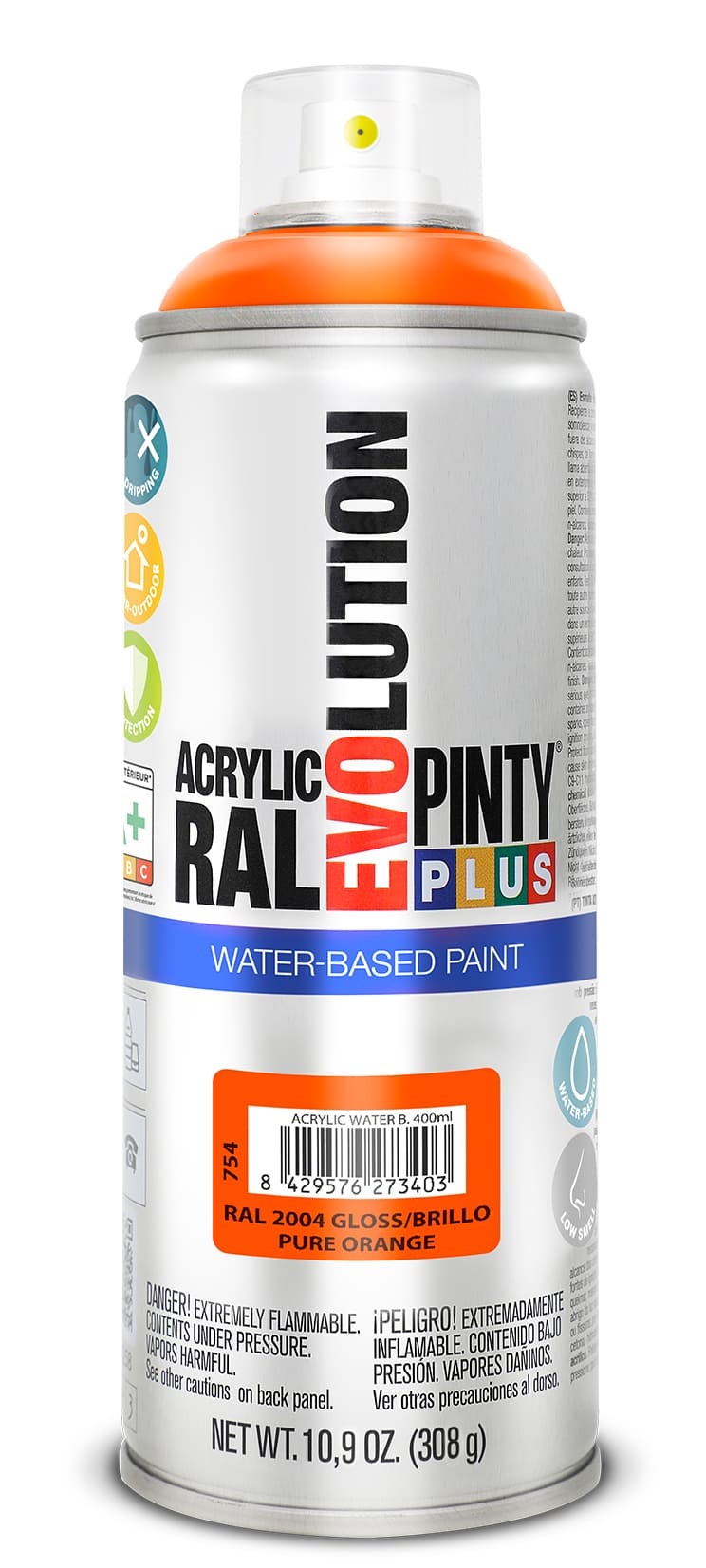
Credit: www.pintyplus.com
Water Based Acrylic Paint Essentials
Water based acrylic paint is popular among artists. It is easy to use and clean. This guide covers the essentials of water-based acrylic paint.
The Composition Of Water Based Acrylics
Water-based acrylic paints are made from pigments and an acrylic polymer. The pigments give the paint its color. The acrylic polymer binds the pigments together. Water is used to thin the paint. This makes it easy to apply.
Acrylic paint dries quickly. It forms a water-resistant layer. This makes it very durable.
Advantages Over Oil And Watercolor Paints
Water-based acrylic paint has many benefits. It is easier to clean than oil paints. You only need water and soap. Oil paints need harsh chemicals for cleaning.
- Quick drying: Acrylic paint dries faster than oil paint.
- Less toxic: It has fewer fumes compared to oil paint.
- Versatile: You can use it on many surfaces.
Watercolor paints are transparent. Acrylics can be opaque or transparent. This gives artists more options. Acrylic paint also sticks well to most surfaces. Watercolor needs special paper.
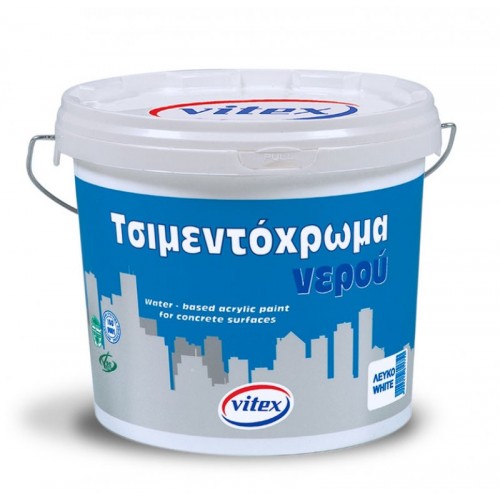
Credit: www.chrgeorgioudiy.com
Choosing Your Palette
Choosing your palette is a crucial step in starting with water-based acrylic paint. A well-chosen palette helps you create stunning art effortlessly.
Selecting Colors For Beginners
Beginners should start with a basic set of colors. A simple palette usually includes:
- Red
- Blue
- Yellow
- White
- Black
These colors mix well to create more shades. This helps you learn color theory.
Understanding Pigments And Opacity
Understanding pigments and opacity is essential. Pigments are the color particles in the paint. They can be natural or synthetic.
| Term | Meaning |
|---|---|
| Pigment | Color particles in paint |
| Opacity | How much you can see through the paint |
Opacity affects how you layer your colors. Transparent paints show the layers underneath. Opaque paints cover the layers below.
Check paint labels for opacity information. This helps in deciding your approach to layering.
Tools Of The Trade
Creating art with water-based acrylic paint requires the right tools. These tools help bring your vision to life. Understanding their use will enhance your painting experience.
Brushes And Their Strokes
Brushes are essential in acrylic painting. They come in various shapes and sizes. Each brush type creates unique strokes. Flat brushes are great for bold strokes. Round brushes offer detailed lines and intricate work. Fan brushes are perfect for blending and creating textures.
Using the right brush can make a big difference. It can define your painting style and improve your technique. Keep a variety of brushes handy for different effects.
Palettes And Mixing Techniques
Palettes are crucial for mixing acrylic paints. A good palette helps you control colors better. Use a wet palette to keep paints moist longer. Dry palettes are also an option for quick mixes.
Mixing techniques vary. Start with primary colors to create new shades. Use a palette knife for smooth blends. Brushes can also help in mixing, offering different textures. Practice mixing to achieve the desired hue.
| Tool | Purpose |
|---|---|
| Flat Brush | Bold Strokes |
| Round Brush | Detailed Lines |
| Fan Brush | Blending Textures |
| Wet Palette | Keeps Paints Moist |
| Palette Knife | Smooth Blends |
Preparing Your Canvas
Before you start painting with water-based acrylic paint, preparing your canvas is essential. A well-prepared canvas ensures your paint adheres properly and your artwork lasts longer. Let’s dive into the steps you need to take for perfect canvas preparation.
Surface Preparation
Start by choosing a clean, dry canvas. Make sure it’s free from dust and dirt. Use a soft cloth to wipe the surface. This helps the paint stick better.
Next, check the canvas for any loose threads. Trim these with small scissors. This prevents bumps in your painting.
For a smoother surface, lightly sand the canvas. Use fine-grit sandpaper for this task. Sanding removes rough spots and makes painting easier.
Priming Basics
Priming your canvas is a crucial step. It helps the paint adhere and prevents it from soaking into the canvas. Use a good quality primer for best results.
Apply the primer with a wide brush. Spread it evenly across the canvas. Make sure to cover the edges as well. Let the primer dry completely before painting.
You can apply multiple coats of primer. Two to three coats are usually enough. Sand lightly between each coat for a smooth finish.
Here’s a simple table to summarize the steps:
| Step | Action |
|---|---|
| 1 | Clean the canvas |
| 2 | Trim loose threads |
| 3 | Sand the surface |
| 4 | Apply primer |
| 5 | Let primer dry |
| 6 | Apply additional coats |
Following these steps ensures a well-prepared canvas. This makes your painting process smoother and more enjoyable.
Mastering Acrylic Techniques
Mastering acrylic techniques unlocks creativity with water-based acrylic paint. This paint is versatile and easy to use. Let’s explore some key techniques to enhance your skills.
Blending And Layering
Blending and layering are essential for depth and realism in your artwork. Blending involves smoothly transitioning between colors. Use a damp brush to blend colors seamlessly.
- Start with two colors on your palette.
- Apply the first color to your canvas.
- While still wet, apply the second color next to it.
- Use a clean, damp brush to blend the edges where the colors meet.
Layering involves applying multiple layers to create depth. Let each layer dry before adding the next. This prevents muddiness in your colors.
- Begin with a thin base layer.
- Allow it to dry completely.
- Apply subsequent layers, adjusting opacity as needed.
Creating Textures And Patterns
Creating textures and patterns adds interest to your painting. Use different tools for varied effects. Sponges, brushes, and palette knives are great for this.
| Tool | Effect |
|---|---|
| Brush | Fine lines and details |
| Sponge | Soft, textured background |
| Palette Knife | Bold, thick strokes |
Experiment with different tools to find your unique style. Try stippling with a dry brush for a speckled effect. Drag a comb through wet paint for interesting patterns. The possibilities are endless!
Working With Mediums And Additives
Working with water-based acrylic paint offers many creative possibilities. By using mediums and additives, artists can achieve various textures and finishes. These tools enhance the versatility of acrylics, making the painting process even more exciting.
Extenders And Thickeners
Extenders increase the drying time of acrylic paint. This gives you more time to work on your piece. They also improve the flow and blending of colors.
Thickeners change the consistency of the paint. They allow you to create bold, textured strokes. This can add depth and dimension to your artwork.
| Medium | Purpose |
|---|---|
| Extender | Increases drying time |
| Thickener | Adds texture and body |
Using Gels And Pastes
Gels can make the paint thicker and more opaque. They come in different finishes, such as glossy or matte. This allows for various visual effects.
Pastes offer even more texture. They can be applied with a palette knife for a sculptural effect. Some pastes also include sand or other materials for extra grit.
- Glossy Gel: Adds shine
- Matte Gel: Reduces shine
- Modeling Paste: Creates thick texture
- Sand Paste: Adds gritty texture
Experimenting with these mediums can elevate your art. They provide endless possibilities for creativity and expression. Enjoy the process and see where your imagination takes you!
Mixing And Storing Acrylic Paints
Mixing and storing water-based acrylic paints can be fun. Proper mixing and storage ensure your paints stay fresh. It keeps them ready for your next artistic project.
Mixing For Consistency
To achieve a smooth and even color, mix your acrylic paints well. Use a palette knife for better control. Stir until you see no streaks.
Sometimes, you may need to thin your paint. Add a few drops of water to achieve the desired consistency. For thicker paint, try adding a small amount of acrylic medium.
Always mix small amounts first. This helps avoid waste. Experiment with different ratios to find your perfect blend.
Preservation And Storage Tips
Proper storage keeps your acrylic paints fresh for longer. Store paints in airtight containers to prevent drying out. Mason jars or plastic containers with tight lids work well.
Keep your paints away from direct sunlight. Sunlight can alter the color and consistency of your paints. Store them in a cool, dark place.
Label your containers with the color and date of storage. This helps you keep track of your paint inventory.
For easy access, organize your paints by color or type. You can use a small shelf or drawer system.
| Storage Tip | Reason |
|---|---|
| Use airtight containers | Prevents drying out |
| Avoid sunlight | Maintains color consistency |
| Label containers | Keeps track of inventory |
| Organize by color/type | Easy access |
Following these tips will make your painting experience smoother. Happy painting!
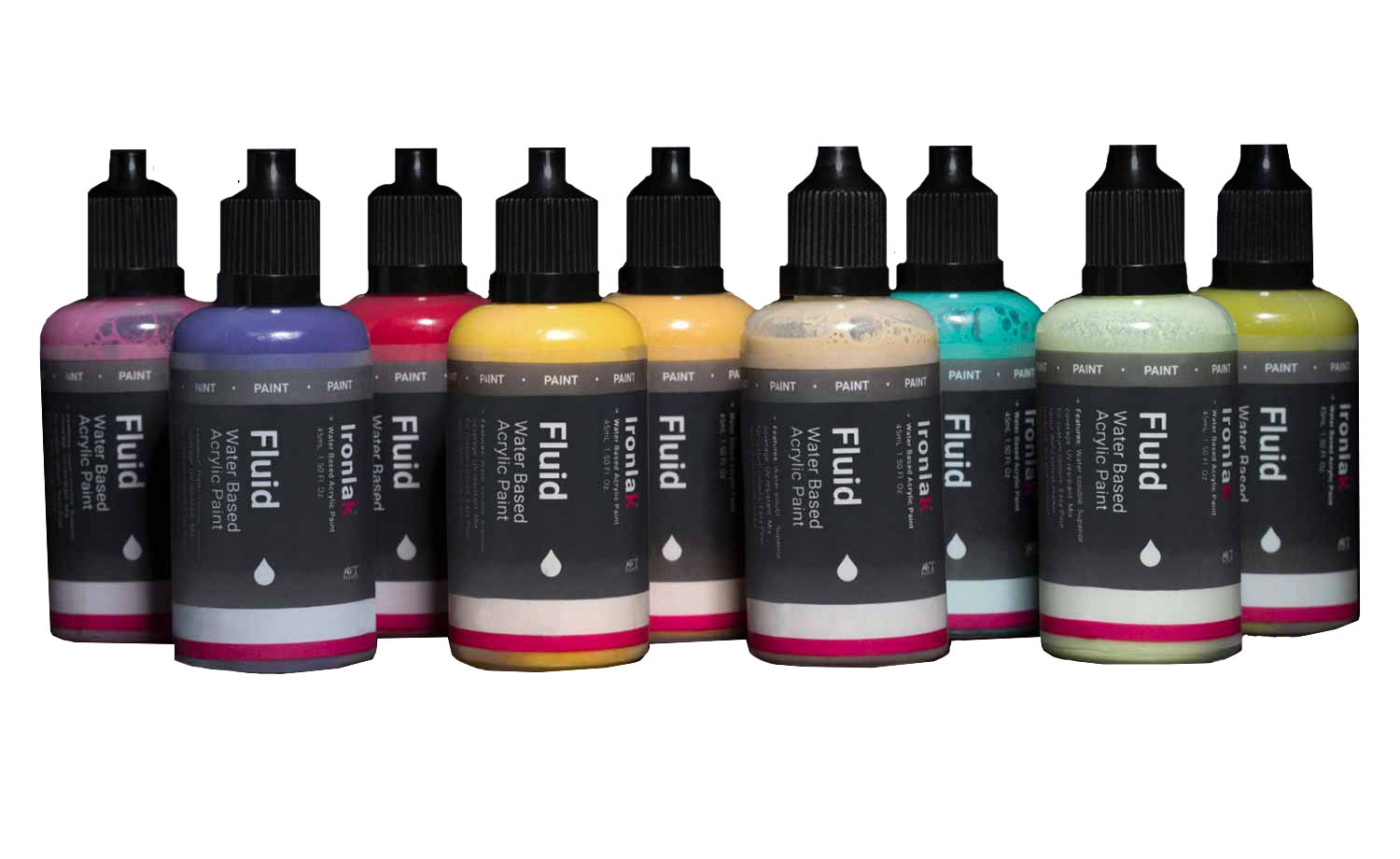
Credit: spratx.com
Inspiration And Creativity
Water-based acrylic paint is a versatile medium that unleashes your creativity. It offers endless opportunities for artistic expression. Let’s dive into how it can spark your inspiration.
Exploring Styles And Influences
Discovering new styles can ignite your passion for painting. Look at famous artists and their works. Study different art movements like Impressionism or Abstract Art.
- Impressionism: Focus on light and color
- Abstract Art: Emphasize shapes and forms
- Realism: Capture life-like details
Experiment with these styles using water-based acrylics. They dry quickly, allowing you to layer colors easily.
Developing Your Artistic Voice
Finding your unique voice takes time and practice. Start by experimenting with different techniques. Try blending colors, using various brush strokes, and incorporating textures.
| Technique | Description |
|---|---|
| Blending | Mix two or more colors smoothly |
| Dry Brush | Apply paint lightly for texture |
| Layering | Build up colors one layer at a time |
Use a sketchbook to jot down your ideas. Practice daily, and don’t fear mistakes. Every stroke brings you closer to your artistic identity.
Frequently Asked Questions
What Is Water-based Acrylic Paint?
Water-based acrylic paint uses water as a solvent. It dries quickly, is non-toxic, and offers vibrant colors. Ideal for artists.
Does Water-based Acrylic Paint Wash Off?
Yes, water-based acrylic paint can wash off while wet. Once it dries, it becomes water-resistant and harder to remove.
What Is The Difference Between Water-based And Oil Based Acrylic Paint?
Water-based acrylic paint dries quickly, cleans up with water, and has a less intense odor. Oil-based acrylic paint takes longer to dry, requires solvents for cleanup, and provides a smoother finish.
Is Water-based Acrylic Paint Permanent?
Yes, water-based acrylic paint is permanent once it dries. It forms a durable, water-resistant finish.
What Is Water Based Acrylic Paint?
Water based acrylic paint is a fast-drying paint made with pigment suspended in an acrylic polymer emulsion.
Is Water Based Acrylic Paint Durable?
Yes, it is durable and long-lasting when properly applied and sealed.
Can You Use Water Based Acrylic Paint On Wood?
Yes, it adheres well to wood surfaces and provides a smooth finish.
How Do You Clean Water Based Acrylic Paint?
Use soap and water for cleaning brushes and surfaces.
Conclusion
Water-based acrylic paint offers versatility and vibrant colors for artists of all levels. It’s eco-friendly and easy to clean. Perfect for various surfaces, this paint dries quickly, ensuring efficient project completion. Choose water-based acrylic paint for your next artistic endeavor and experience its benefits firsthand.
Unlock your creativity with this user-friendly medium.


